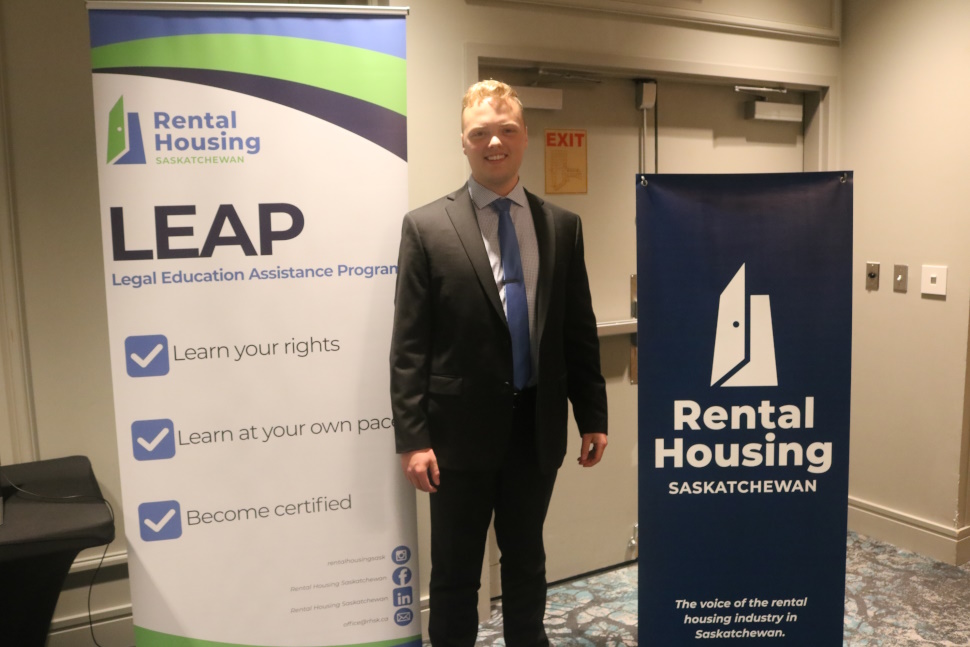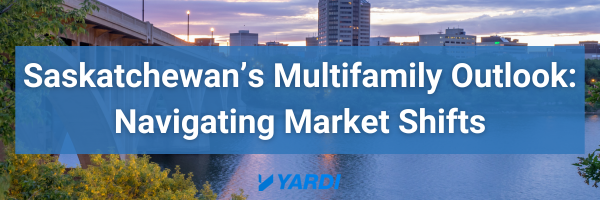MOOSE JAW — Landlords across Saskatchewan will soon have a new tool to help navigate the province’s rental laws, thanks to a first-of-its-kind legal education program officially announced in Moose Jaw recently.
Held in the mezzanine at Temple Gardens Hotel & Spa, the announcement marked the provincial debut of Landlord LEAP (Legal Education Assistance Program), an initiative spearheaded by Rental Housing Saskatchewan (RHSK). The program is designed to improve legal understanding, reduce disputes, and promote professionalism in the rental housing sector.
“Housing is really top of mind for everybody right now, because there is definitely a need for more housing, and rental housing specifically, right across the province,” said Landon Field, CEO of RHSK.
LEAP seeks to help both tenants and landlords by creating “a new program where people can understand the baseline of what is expected when it comes to screening tenants, … developing lease agreements, what types of things you can and can’t include, and then how the eviction process works and (how to prevent evictions) …,” he explained.
The course includes around nine modules and covers the full scope of a rental relationship — from screening tenants and signing leases, to eviction prevention and proper legal procedure when ending a tenancy. Field said it’s a practical tool not just for large property managers, but also for “anyone who owns a rental property, whether that’s one basement suite … or you’re a professional property manager looking to refresh your skills.”
“This is something that is really easy to understand and everyone will be able to take something away from this,” he added.
What makes the program unique is its Saskatchewan-specific design. While other provinces offer similar resources, LEAP was developed using the province’s own Residential Tenancies Act and existing legal framework — with support from the Law Foundation of Saskatchewan.
Field noted that when landlords are better informed, everyone benefits.
“A well-educated and professional rental housing provider leads to safe and stable tenancies for renters as well,” he said. “When renters and landlords … understand their rights and responsibilities, we’ll hopefully see fewer disputes that need to be tried at the Office of Residential Tenancies.”
Field said the decision to debut the program in Moose Jaw was intentional, highlighting the city’s role in the wider provincial network.
“We wanted to come to Moose Jaw to launch this program because we’re looking to expand our reach,” he said. “We really wanted to bring people together to hear different ideas, bounce those ideas off of each other, and really demonstrate our reach as a provincial organization.”
The certification is optional, and the course is open to both RHSK members and non-members. Pricing is set at $99 for members and $199 for non-members, with in-person workshops also planned for the future. Field said a number of larger housing providers have already expressed interest in using LEAP training as an onboarding requirement for new staff.
The program has been in development for over a year and is expected to officially go live this fall, with Sept. 1 targeted as a tentative launch date. RHSK began taking waitlist registrations during the Moose Jaw announcement.
For more information or to join the waitlist, visit RentalHousingSK.ca or call 1-306-653-7149.









